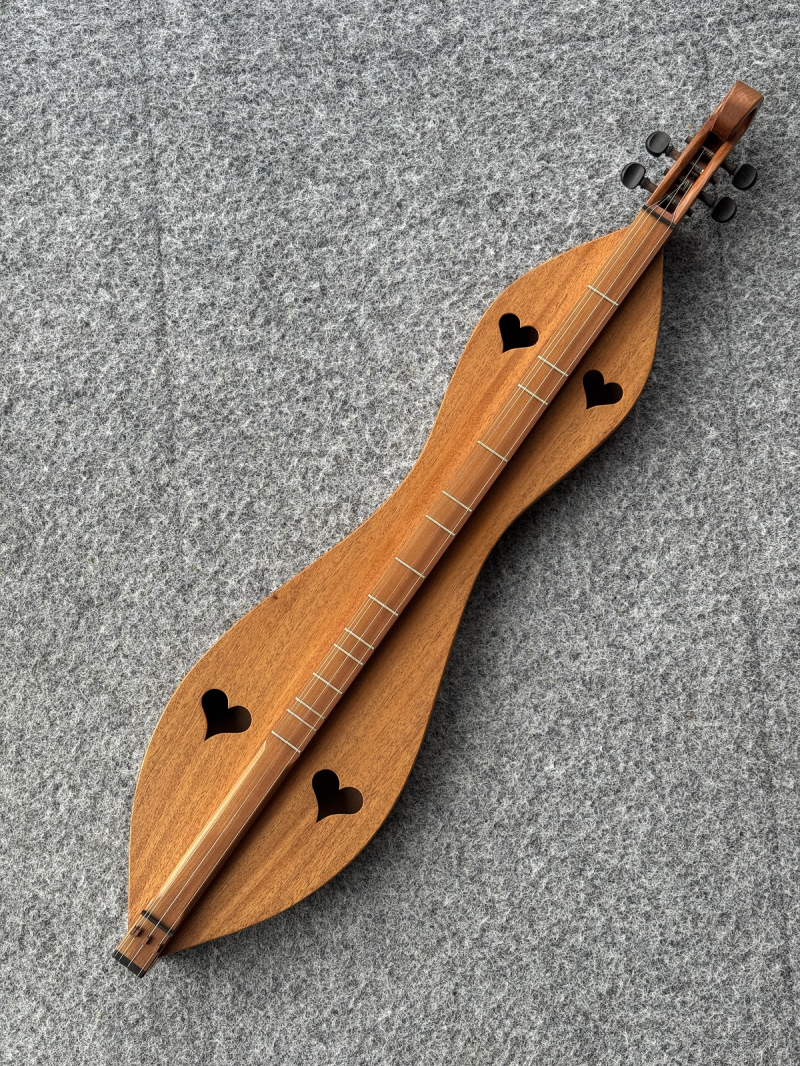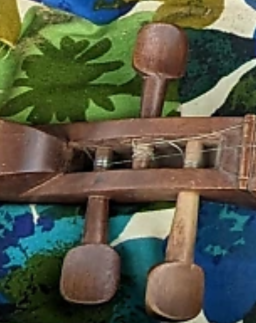1981 Jeremy Seeger Dulcimer
FOR SALE:instruments/music items/CDs/Wanted to Buy...
Greetings from a snowy Vermont. I just joined this forum to get some advice on selling a dulcimer that I recently re-discovered while cleaning out the family home for my aging parents. Thank you for the warm welcome upon my joining.
The dulcimer has a backstory, which I’ll share here:
In the late 70’s and early 80’s our family used to take a vacation in Hancock, VT for a week every summer, renting the house of a family friend. Every year there was always some new “Vermonty” experience to be discovered. We came home with fly fishing rods one year, new jackknives for whittling another year, and in 1981, a beautiful handmade dulcimer.
The dulcimer purchase stands out in my memory because we had to navigate our station wagon up a steep and curvy dirt road to a rustic home where we were met by a bearded, bespectacled man named Jeremy who invited us in. My Dad, a corporate-type guy, had been romanced by the simplicity and beauty of the instrument while in VT. I wasn't privy to the transaction, but the dulcimer came home with us to western NY to be explored for about 2 weeks before it took up residence on top of the equally unused piano for the next 40+ years.
I rediscovered it while paring down my aging parents’ belongings. The label inside the dulcimer was handwritten and confirmed my memory that a man named Jeremy had built it. It also revealed his last name, Seeger. With a little research on the web, I learned of Jeremy’s lifetime of dedication to the instrument and also that he had sadly passed away in 2023 (otherwise, I would have reached out to him first, as I currently live about 1/2 hour from Hancock.)
While this dulcimer does have some sentimental value, I’m content with having the memories. I would like to find it a new home where it will be appreciated and played as intended when it was first crafted.
I’d love opinions from this community on a fair selling price and welcome inquiries from potential buyers. I will happily donate back to the forum upon sale.
The dulcimer is with me in Vermont. It does not have a case, but I am wiling to work with a buyer to coordinate safe and secure shipping. I replaced the strings just to keep the little blocks by the bridge from falling off (they probably have a name that I don't know!)
Thanks for reading and I look forward to your comments and questions.
Jud
























 Here's a Folkcraft Chromatic Dulcimer. It's still a Dulcimer because it's part of the Zither family in which the fretboard is above the body as opposed to extended from the body like a Guitar so keep that in mind. The 4 string setup w/ the Doubled Melody String is a bit easier to play w/ Jumbo Frets because the larger sized jumbo frets reduce the distance between the strings & the frets allowing for easier action.
Here's a Folkcraft Chromatic Dulcimer. It's still a Dulcimer because it's part of the Zither family in which the fretboard is above the body as opposed to extended from the body like a Guitar so keep that in mind. The 4 string setup w/ the Doubled Melody String is a bit easier to play w/ Jumbo Frets because the larger sized jumbo frets reduce the distance between the strings & the frets allowing for easier action.